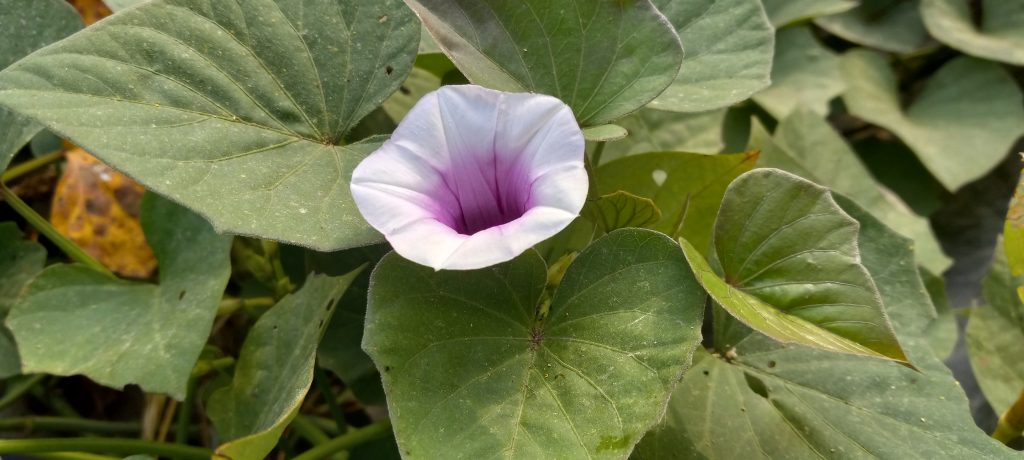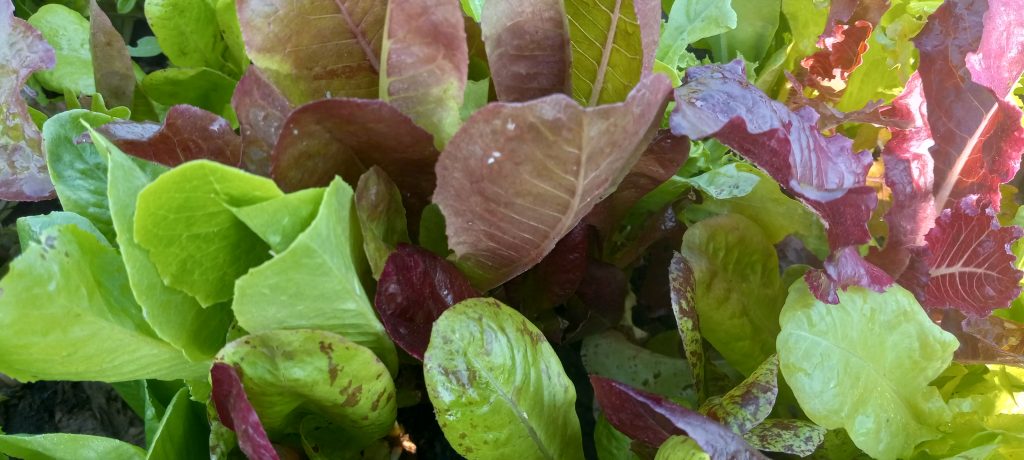
A bunch of announcements then a bunch of other things.
We are still in need of help, either as a volunteer or as an employee. Let me know which you prefer!
We are still taking back the cherry tomato pint containers.
Here are a couple of items I probably should have mentioned before about storing your veggies:
In the delivery boxes we’ve been giving out garlic and onions in plastic bags. We do this to keep the other produce we spent hours cleaning from getting dirty from the dirty garlic and onions. I recommend you take the items out of the bag. I suspect they will last longer sitting open on your counter than in a sealed bag.
We don’t wash beans. Have I already mentioned this? Wet beans rot in the cooler so we keep them out of the water. Of course you should wash them before using.
Do not store tomatoes in the fridge, unless you have cut into them. Cold temps change the texture of the fruits. Cherry tomatoes aren’t as susceptible to cold injury.
Sometimes we put wet potatoes in a bag, not because they are wet but because we just washed them prior to packing the boxes. I recommend you take the potatoes out of the plastic bag before you store them. For long term potato storage you can put them in the fridge. For short term storage you can put them in a cool, dark location. But always allow plenty of air circulation.
Farm News
One part of the vegetable farming equation that is often overlooked is pollination. Of course not all vegetables require pollination to produce the vegetable, e.g. lettuce where we eat the leaves of the plant, but many vegetables do, especially those that should be classified as fruits, e.g. tomatoes. Different veggies are pollinated in different ways. Let’s first look at something simple, like a tomato. Tomato flowers are self pollinating. The flowers contain both male and female reproductive parts. So if you have one tomato plant and it only has one flower, that flower can pollinate itself to create a tomato fruit.

Let’s take a look at a different family of plants, the cucurbits. Cucurbits have separate male and female flowers. For the plant to reproduce, the pollen from a male flowers has to be delivered to a female flower. Most of the time this pollination is done by insects. An insect visits the male flower. Gets a bit of pollen stuck to it. Then subsequently visits the female flower and deposits some of the pollen on the female flower. This is all done by accident of course (or as kids these days like to say, “on accident”). Once the female flower is pollinated it can then form a fruit, like say a cucumber.
A totally separate means for pollination can be found in the grain aisle of your local vegetable farm. In this case we are talking about corn. Corn has it’s male part, the tassel, hanging out at the top of the plant waiting for the female part, the silk, to emerge. The tassel sheds a bunch of pollen that floats down and pollinates the silk. The plant then forms the ear of the corn and every silk that was pollinated becomes a kernel on the ear of the corn.
So why am I bringing this up in this week’s newsletter? It is to point out that despite all our hard work and superior effort we don’t get to control one of the things that matters most when trying to create vegetables — pollination. And if nature doesn’t do its job and fails somewhere in the pollination process, our veggies don’t become all that they could be, even though we farmed perfectly.
Let’s take a look at where we’ve seen this failure as of late. You probably have noticed that not all our cucumbers are perfect. Some are pointy. Some have skinny parts. Some have curves. And some we leave in the field because they are just that ugly. Many times these defects are due to poor pollination. Researchers believe that many pollinators don’t make the rounds as much when the weather is hot. I can’t confirm this since I’m too busy farming to figure out what the pollinators are doing. But I don’t think that tells the full story. I’ve noticed that as cucumber plants get old the cucumber fruit get more funky. I suspect that as the plants slowly succumbs to whatever is going to kill it that the plant doesn’t produce as much or as viable reproductive organs. So the fruits start looking funny even if we have enough pollinators. This is one of the reasons we like to plant multiple successions of cucumber. Once the plants start producing funky fruits we can abandon that planting and move on to the next. Unfortunately as I’ve said multiple times, this year the deer beat us to the second planting. So we continue to harvest the first and give out less than perfect cukes.
Another plant that seems to have trouble with pollination lately is this last planting of sweet corn. We’ve found quite a few ears where there are quite a few missing kernels. Typically we can feel through the husk and leave behind those ears which are not mostly formed but this latest planting seems to be a bit more vexing. The husks are thicker and seem to keep us from fulling comprehending what is going on beneath the husk. So sometimes you end up with ears of corn with missing kernels or missing rows of kernels. With the corn the pollination problem seems to be due more to late silking of some of the stalks. The tassels have already shed their pollen before the silk emerged. Or also likely, the pollen was washed away by a rainstorm before the silk emerged to be pollinated. Whatever the cause, it is certainly frustrating when again we farmed perfectly but nature threw us a curve ball and affected the pollination.

Anyway, this is just a long winded way to say that sometimes we give out less than ideal veggies. Sometimes it is due to our missing the signs that the produce is faulty (e.g. couldn’t tell the cob wasn’t fully formed) and sometimes we send out less than ideal veggies because the alternative is none of that particular crop and we’d rather you have some cucumber instead of no cucumber (though I suppose this year many of you may have opted for the fewer cucumber option). And of course the last point of this story is that even though we do everything perfectly, due to Mother Nature we may still end up a bit short of our expectation.
What will we have this week?
The last of the season sweet corn. Plus a lot of tomatoes, cherry tomatoes, tomatillos, hot peppers, sweet peppers, some eggplants, the last? of the zucchini, some funky cucumbers, salad mix, potatoes, onions, garlic, some beans, a few broccoli, and some other things I am forgetting.
Recipe of the Week
Here is a recipe sent in by one of our members. It comes from a site that limits the number of recipes you can access so be aware it might not be accessible if you keep clicking on it. Corn and Chickpea Bowl with Miso-Jalapeno Tahini. Here is a pdf version which may not be sent via the newsletter email sending software. Hope fully you’ll be able to get this recipe one of these two ways.
Joke of the Week
A pickle goes into a bar, sits down and asks the bartender for a gin and tonic. The bartender responds, “Sorry, we don’t serve food here.”
As always, send in your comments, suggestions, ideas, etc.
